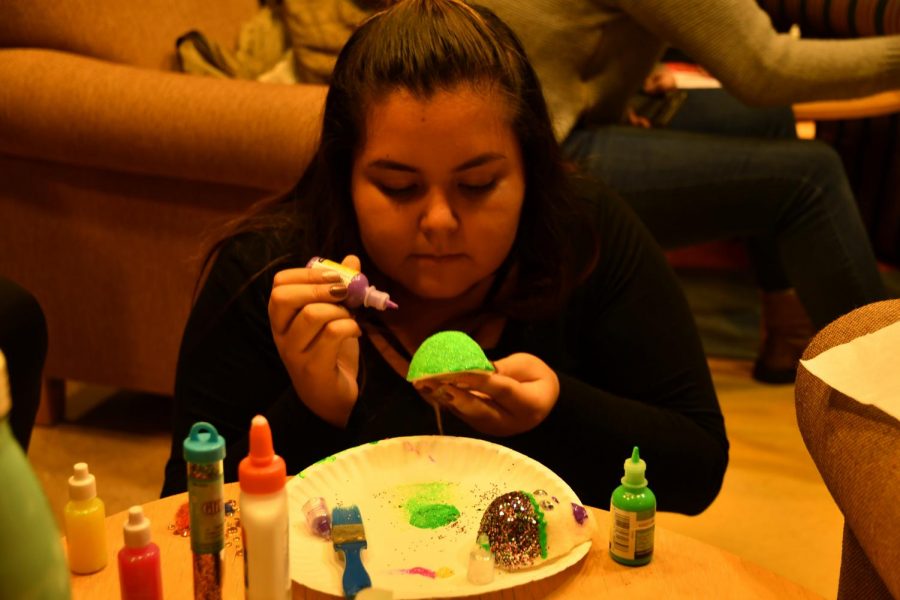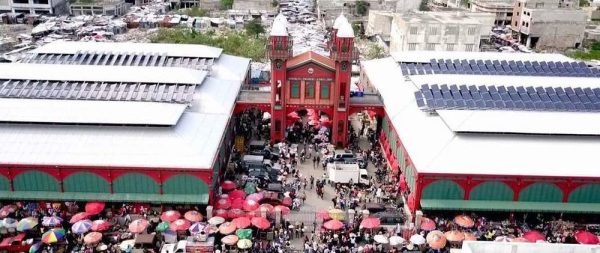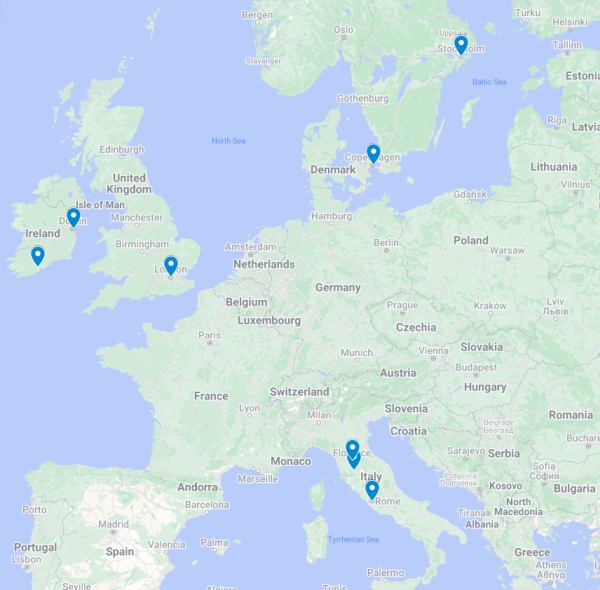Union Latinx celebrates Dia de los Muertos
Corina Perez, ‘20, decorates sugar skulls in Grounds for Change on Wednesday, Nov. 1, 2017. The sugar skulls and altar will be on display in GFC until Nov. 8, 2017.
Dia de los Muertos, or Day of the Dead, is a Mexican holiday which is celebrated each year from midnight on Oct. 31 until the final moments of Nov. 2 to remember and honor the lives of deceased loved ones.
This Mexican holiday coincides with the Catholic Church’s All Saints Day on Nov. 1 and All Souls Day on Nov. 2.
It is a common misconception that Dia de los Muertos is the same as Halloween. While the two holidays may share some similarities as far as decorations go, there are many significant differences.
“It’s more of a celebration of death and the loved ones that have passed away,” said Marisol Loza, ’19. “It is supposed to be something happy. That is why it is so colorful.”
The belief on Dia de los Muertos is that at midnight on Oct. 31, the gates of heaven are opened and deceased children are allowed to reunite with their families for the day.
“Dia de los Inocentes,” Day of the Innocents, or “Dia de los Angelitos,” Day of the Angels, takes place on Nov. 1.
On Nov. 2, the spirits of adults are allowed to come to earth and enjoy the prepared festivities as well.
“In Mexico, it is a very special day of the dead so they go all out with [their celebrations],” said Cassandra Lopez, ’20.
Celebrations begin with the cleaning of graves and the preparation of the ofrenda, or altar. Ofrendas include candles and flowers, along with fruit and pan de muerto, a type of sweet bread made once a year for the celebration.
These altars are composed of many different types of food including peanuts, bread, soda, hot chocolate, bottles of water and plenty of other treats to revive the weary spirits that have joined the celebration. The ofrendas serve as gifts for the dead and often include the favorite foods and treats of the deceased.
“It is just very important because it is the only time that we put like this altar for [the deceased] up with their favorite food and toys and anything that is important to them,” said Carina Saldivar, ’19.
For the deceased children, or angelitos, families leave candy and toys. However, on Nov. 2, these toys will be switched out in order to provide more adult gifts such as cigarettes and alcohol.
In addition to flowers and candles, the altars are also decorated with sugar skulls and skeletons. The skulls are constructed to represent a departed soul and often have the name of the deceased painted across the forehead. These sugar skulls are then placed in front of the gravestone in order to honor the deceased and are decorated with glitter and bright colors in order to welcome the returning souls with smiles and joy.
“Death can be seen as something really scary, but Dia de los Muertos really tells you it doesn’t have to be,” Loza said. “[Day of the Dead] is more about remembering and celebrating memories of when they were alive.”
Although Dia de los Muertos is primarily celebrated in Mexico, it is also celebrated in many communities in the United States.
“In my city, they do a little celebration for [Dia de los Muertos] and I have gone and it has been a great experience,” Lopez said.
Lopez also attended the Union Latinx celebration in Grounds for Change on Nov. 1. UL hosted a sugar skull decorating event there and provided a space for students to share stories about loved ones. The altar and decorations will remain in GFC until Wednesday, Nov. 8.
For many, Dia de los Muertos is a way to remember a loved one, but some just enjoy the beauty and tradition of the celebration.
“The reason why I celebrate is because it has just been in my culture forever,” Loza said.









